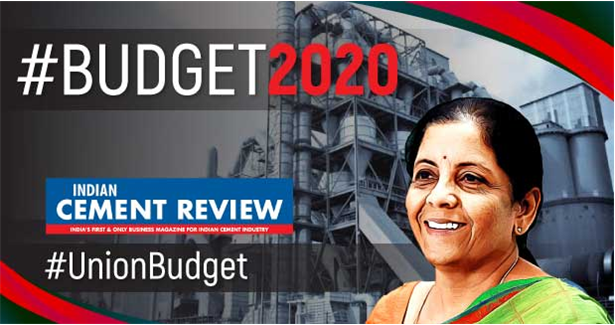
Budget 2020: Key takeaways for infrastructure
The detailed budget speech, one of the most comprehensive ones in recent past, did have some significant positives for sectors like infrastructure, power, banking and NBFC, and agriculture, while reiterating her focus on affordable housing, education and healthcare sector. The continued pursuit to simplify the tax regime and coming up with much needed anticipated abolishment of DDT after extending radical tax cuts to the corporate regime just few months back demonstrates the strong resolve of the government to counter the market perception that the economy is in a fragile state with the capex cycle choking up facing criticism on the rising unemployment rate.
The announcement of the ambitious National Infrastructure Pipeline (NIP) and the optimism embedded in the GDP projections for FY 21 set out in the national economic survey, clearly demonstrated government?s intent to unleash the capital expenditure cycle. However, one needs action on ground with a pragmatic approach. Given the challenges surrounding the current financial ecosystem characterising prolonged resistance to fund greenfield infrastructure projects by the bank and domestic financial institutions, some of the key positive takeaways for me from the FM?s speech include confirming allocation of Rs 220 billion disbursed to entities like IIFCL and NIIF to fund their equity base to finance the NIP. It is worth noting that this base of could be further leveraged at least 2-3 times if not more by likes of NIIF and IIFCL for further investment and lending into infrastructure sector. The other positive move was about the liberal tax concession extended to sovereign and pension funds investing into infrastructure sector. This would have major positive impact on launching InVITs with a renewed vigour for both public and private sector players including the likes of NHAI which has been contemplating monetising over 6,000 km of highways before 2024 as per FM?s speech. Large takers for these projects being planned to be monetised on Toll Operate Transfer (TOT) basis shall be backed by the pension and sovereign funds and hence a strategic move to attract the much needed long term financing for the infrastructure sector. I am certainly looking forward to some potential changes in design and approach towards rolling out new projects with robust plan for execution which is perhaps the genesis of creating Project Preparation Unit which was also briefly covered in the FM?s speech.
While the FM?s budget speech caters to the demands from the sovereign and pension funds rearing to invest in the infrastructure sector, the concern is that their interest is largely revolving around buying operational assets with marginal contribution towards new greenfield capacity addition. Hence, the sector still needs some fresh dose of funding avenues for new projects which needs to be urgently addressed. The extension of tax concession for power generation companies, expansion plan for the national gas grid and investments in newly planned smart cities, economic corridor and data centres are the other key highlights which one would closely like to follow in the fine prints.


 +91-22-24193000
+91-22-24193000 Subscriber@ASAPPinfoGlobal.com
Subscriber@ASAPPinfoGlobal.com